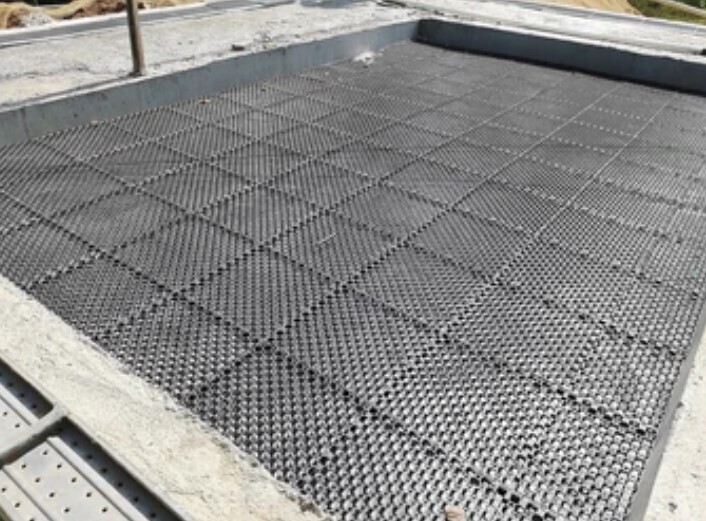Drainage cell
What are drainage cells?
Drainage cells reinforce the efficient sub-surface drainage as well as the ventilation of the contractors landscapes and building foundations. It is common to make these cells with high-strength polypropylene or polystyrene, which have three-dimensional structures resembling honeycombs that allows for fast water absorption and movement. In a bid to achieve this configuration, they are designed in such a way that even at higher compressive loads, it remains water flow friendly.
They are therefore useful in various civil engineering applications because they can efficiently carry out their intended purpose under extreme loading conditions like heavy traffic and extreme weather changes. Therefore, their durability is increased by factors such as high compressive strength and chemical resistance, making them functional regardless of environmental conditions.

When to use a drainage cell?
In the civil engineering applications of water management, where structure and durability are paramount, effective drainage cells become essential. They are particularly useful in places that have high rainfall or poor percolation through natural soil. Drainage cells can be used by engineers for situations such as retaining walls, planter boxes, roof gardens and playing fields which require good drainage to avoid water logging and related damages. Often, site assessments are carried out before choosing to use drainage cells because the surfaces result in problems associated with runoff and moisture from beneath. Moreover, these units come in handy when it comes to limited natural drainage in urban areas causing standing water problem. In this way using them help remove excess water rapidly thus protecting structures and landscape from damage due to wetness hence sustainability is achieved along with reduced maintenance expenses.
What are the different types of drainage cells?
Drainage cells have various forms that suit different engineering purposes such as modular, sheet-based and geocomposite. Modular drainage cells are very much adaptable to any space by interlocking them making it suitable for intricate geometries. Sheet-based versions provide a continuous layer of drainage that is good for large flat areas such as playing fields or industrial roofs. Geocomposite drainage cells combine geotextiles and membranes which enable better filtration and also assist in quick water evacuation.
When selecting a type, the most important things are durability and load capacity; modular ones usually have higher loads than any other. Another significant aspect is ease of installation; sheet-based and modular ones are often easier than geocomposites to put in place. Specific project requirements, environmental conditions as well as future maintenance must be considered by engineers when choosing the right kind of drain cell.
What are the applications of drainage cells in civil engineering?
Drainage cells are applied in various infrastructure projects in civil engineering to manage water effectively and enhance the longevity of structures. For instance, they are commonly used below pavements to avoid any possibility of accumulation of water that could lead to failure of pavement. In building foundations, drainage cells prevent hydrostatic pressure and moisture ingress, which is important for maintaining structural integrity.
Landscaped areas on rooftops or over parking garages also benefit from drainage cells that allow for adequate stormwater management while supporting plant life. The use of drainage cells is crucial for sustainable urban development as it forms part of green building practices that contribute to LEED certification through effective water management and reduced runoffs. By doing so, structures are lengthened and construction projects reduced in their environmental impacts thus making them an integral component in modern civil engineering designs.
How to install a drainage cell?
Civil engineering is a field where drainage cells installation forms an important part of the construction process. To get started, clear the site by removing any debris and level the portion where you will put drainage cells. Cover the prepared surface with geotextile fabric to stop soil particles from getting into the pores of these cells. Lay down the drainage cells over this fabric ensuring that they are properly intertwined in order to have one continuous layer without openings.
Regarding tools and materials, you will need to have sharp cutters for making holes on the drainage cell, heavy duty pegs or anchors which will be used to fasten this geotextile fabric in position and leveling devices that can verify whether there is smoothness on the surface being worked upon. Uneven installation creates one challenge of ensuring that these cells are leveled; hence they cannot function well for effective drainages. During installation, inspect levels periodically adjusting them if need be. The installations should make strong enough drains.
